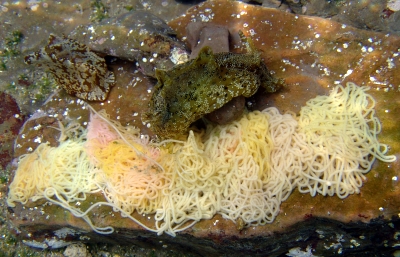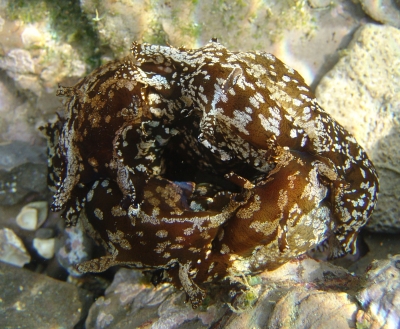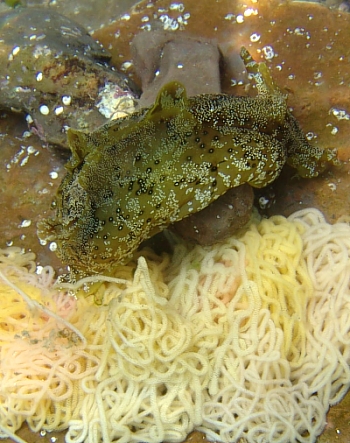Sea Hares in Taiwan
October 30, 2006
From: Vincent Y. Chen


Concerning message #16419:
Dear Bill,
Here attached a few photos of sea hares in Taiwan.
Locality: Ma-Gong sea platform, 30 cm, Taipei, Taiwan, West Pacific Ocean, 12 Feb. 2006, Intertidal rocks. Length: 6~8 cm. Photographer: Vincent Y. Chen.
The last two ones are related to mating behavior. On your Mating chains page you write "Sea Hares, like all sea slugs, are hermaphrodite animals with fully functional male and female reproductive organs. Sometimes, usually in dense populations or in crowded aquariums, they form mating chains of three or more animals, the one at the front acting solely as a female and the one at the rear solely as a male. The animal(s) in between are acting as both males and females."
I observed a circle happened here. If they are mating, are all of them play the role of both male and female? Would they die after mating? Because I also observed some of dead sea hares after peak season.
Thanks!
Vincent Y. Chen
teatai@ms51.hinet.net
Chen, Y.-W., 2006 (Oct 30) Sea Hares in Taiwan. [Message in] Sea Slug Forum. Australian Museum, Sydney. Available from http://www.seaslugforum.net/find/17917
Dear Vincent,
Thanks for these photos. There are two species in your photos. On the left in the top photo there is Aplysia kurodai, which is also the species forming the mating ring in your second photo. The animal on the right in the top photo - and in the bottom photo - is A. oculifera. Aplysia oculifera is easily identifiable from the white spots ringed in dark brown, which resemble eyes and give it the name oculifera [= 'carrying eyes' in Latin].
Concerning your questions, they can certainly act as both male and females when in mating chains. Have a look at the Mass Mortality page for a discussion on mass deaths after breeding.
Best wishes,
Bill Rudman
Related messages
-
Aplysia extraordinaria ? from Korea
From: Dong Bum Koh, February 27, 2006 -
Shell visible in Aplysia kurodai
From: Dong Bum Koh, June 7, 2005 -
Aplysia kurodai from Korea
From: Ronald Noseworthy, June 19, 2002 -
Aplysia kurodai & A. juliana
From: Ron Noseworthy, June 14, 2002
